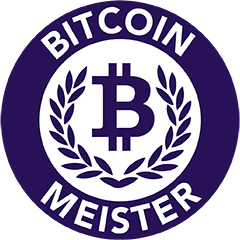The History of Currency part 1 – Introduction
Hello everyone!
To fully understand what Cryptocurrencies are, what they are used for, but also why we use them, it’s necessary to know a little more about the History of the Currency.
The Money, the Currency as we know it, gives rhythm to our lives.
- Virtual purchases (on the Internet),
- Cash transactions (metallic money, banknotes),
- Purchases more or less deferred (bank transfer, cheques),
- but also the brand new method of payment: Cryptocurrencies.
To understand this history, we must go back 10,000 years in the past. As for the Metallic Currency, it is very young in this history, barely more than 2500 years old!
The first part shows us how the Barter has evolved, but also that according to the parts of the world, the objects of Barter were not all the same. These were based mainly on the Social Cultures and Rituals in force in the countries or regions.
But there was always the problem for small transactions, if for example a Beef represented a ‘great value’ it could not be split, or if it was, it lost a lot of its value. It was therefore essential to establish an ‘intermediary’ who could satisfy everyone. This is how the first Currency appeared, the ‘Cauris’ Shells, which were used in some parts of the world until the 20th Century.
As soon as the first Metallic Currency appeared around 600 B.C., the way in which trade took place gradually adapted. This is the subject of the second part.
Each Region, each Empires, used their own system of Metallic Currency, either Gold or Silver or both, in a Bimetallic system, others added Bronze, which gave birth to a Trimetallic system.
While the Money has enhanced trade, allowing all parties involved in transactions to receive the fair value of their property, but the Currency was also subject to propaganda and corruption.
The monetary manipulations carried out by Emperors and Kings to reduce the precious metal content of the Currency irremediably led to economic crises, as for example in the 3rd Century, the percentage of Silver contained in the ‘Silver Denarius’ went from 90% (in the 2nd Century) to end in 276 to a Silver part of 4%, which provoked the first inflationary crisis.
We can’t deny that the Currency is intimately involved with the:
- Corruption, Propaganda
- Wars
- Famines and Epidemics
- Monetary Manipulations
- Financial Crises
- Religions
- Politics and Government
- But also the Counterfeiters
This long history is also punctuated by beautiful innovations, but be careful, not all these innovations were made possible by exchanges or the Currency, but these innovations have allowed exchanges and the Money to develop, to go beyond borders and continents. Thus giving birth to Globalization.
- Invention of the wheel, which improved means of transportation and exchanges over longer distances.
- Development of Metallurgy, which made it possible to split blocks of precious metals and melt them down to produce and Mint certified and unified Coins.
- Invention of the printing press and then the printing press with movable characters, which allowed the development and use of ‘Money Papers’ (994).
- But also the invention of the Steam Locomotive
- The Telegraph, which allowed to send money via a Telegram
- Phone
- Computer
- Internet …
The creation of private banks allowed from the 2nd Millennium B.C., to develop Credit with Interests, but also what Albert Einstein described as the “8th Wonder of the World“: the Compound Interest: Interest on Interest. And it is only 3500 years later that modern private banks appeared in Europe.
Great Names have also participated in all these changes in the history of the Currency such as:
- Hammurabi – King of Babylon (1700 B.C.)
- Croesus – King of Lydia (630 B.C.)
- Aristotle – Greek Philosopher (335 B.C.)
- Polyen – Greek Jurist (year 162)
- The Emperor Constantine (310)
- The Song Dynasty, famous Dynasty for its discoveries, technical and technological innovations ( Mobile Monuments, Weaving Machine, Mobile Printing Character, Black Powder, Civil and Naval Engineering, Metallurgy, Wind Energy … but also the ‘Paper Money’
- Leonardi Fibonacci, who introduced Indo-Arabic numbers in Europe (1202)
- Kanku Musa, the most famous and richest of the Kings! These stories became legends (1312 – 1337)
- Nicolas Oresme and his ‘Traité des Monnaies’ (1355)
- Marco Polo and Vasco de Gama, for the opening of trade routes between continents (1492 – 1498)
- American President George Washington (1792)
- Joseph Schumpeter and his “Creative Destruction” (1942)
- and so many others
To be continued…
See you soon
Christophe WILHELM
© Bitcoin Meister

Post Comment
You must be logged in to post a comment.